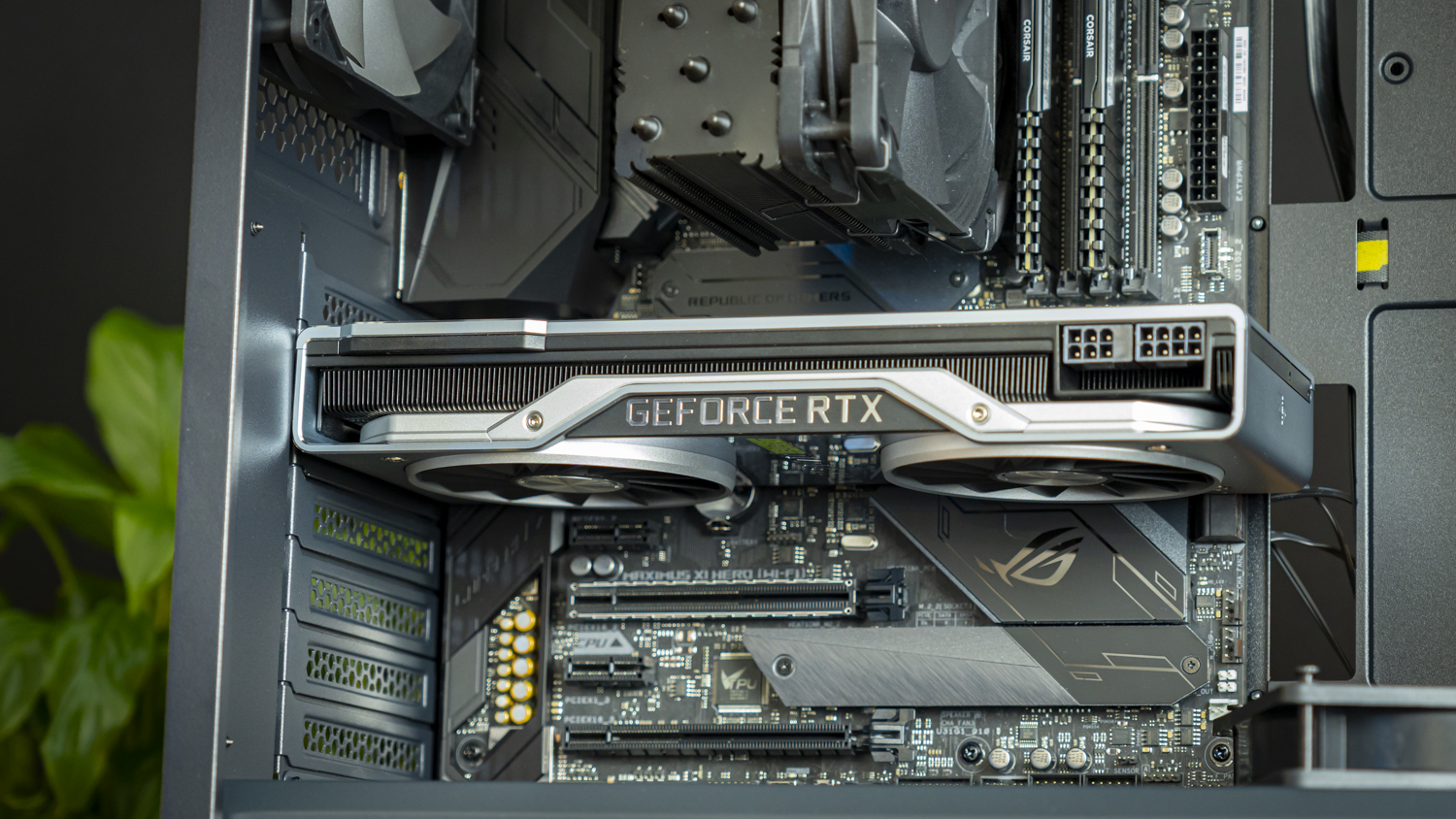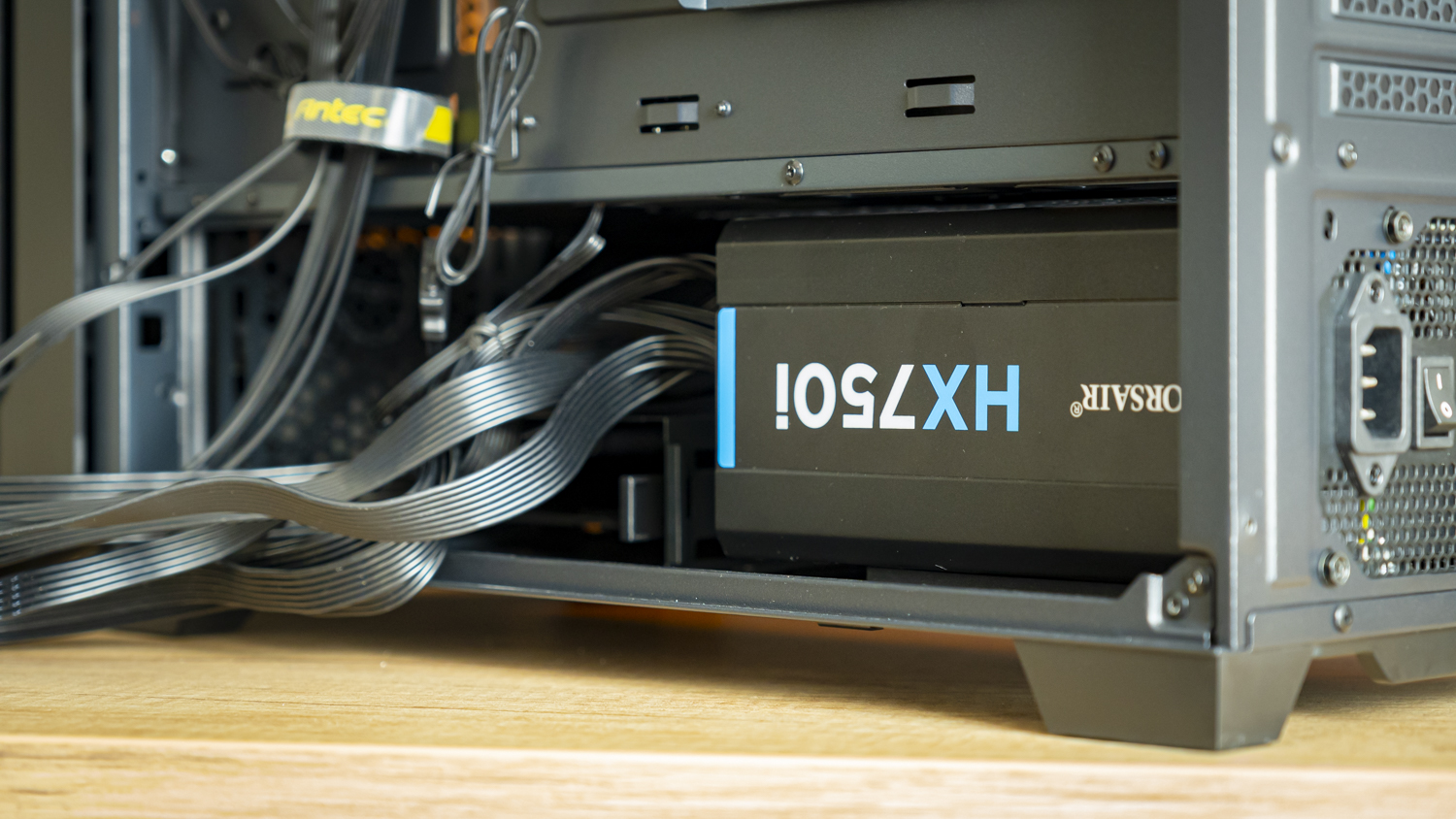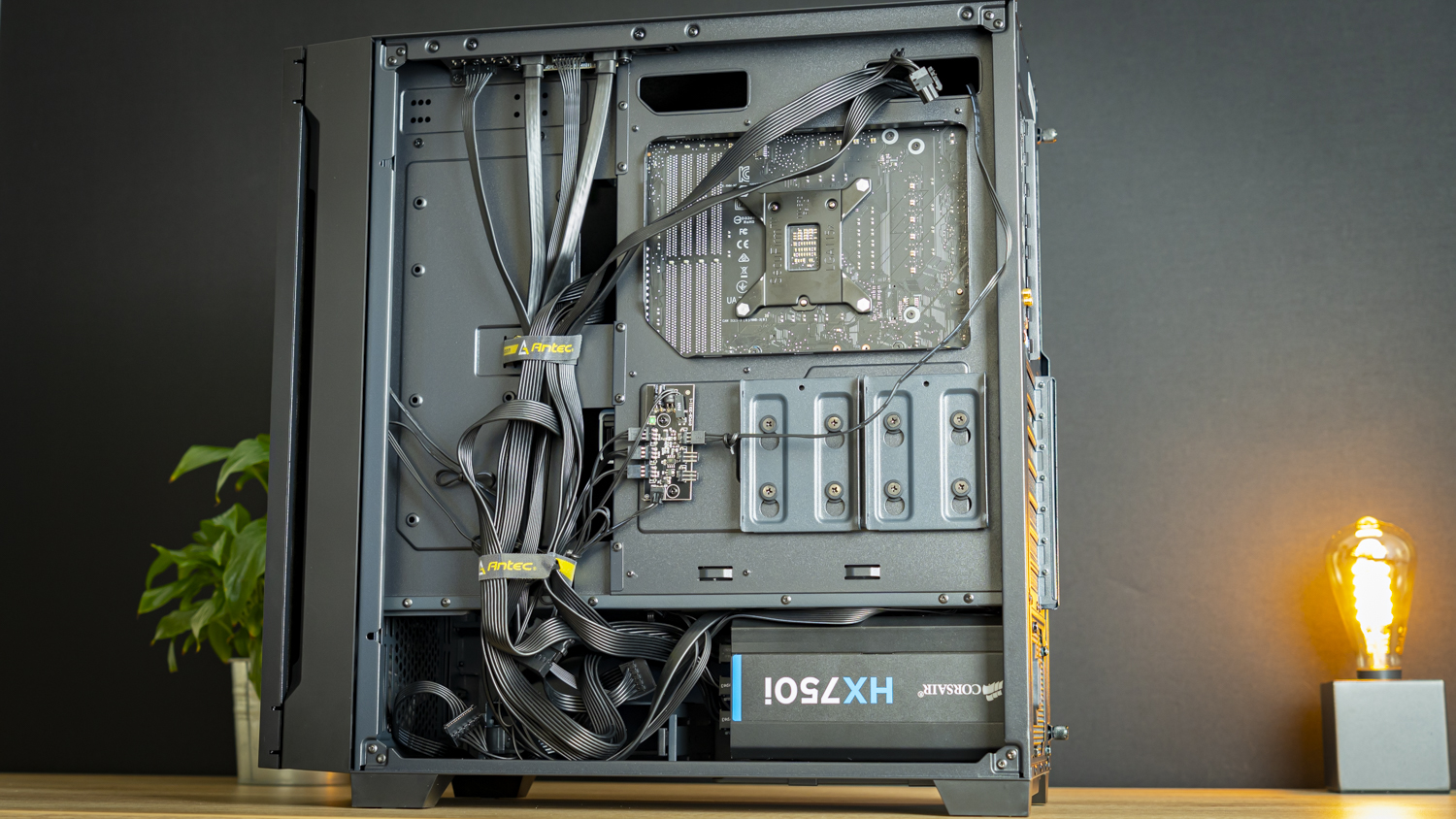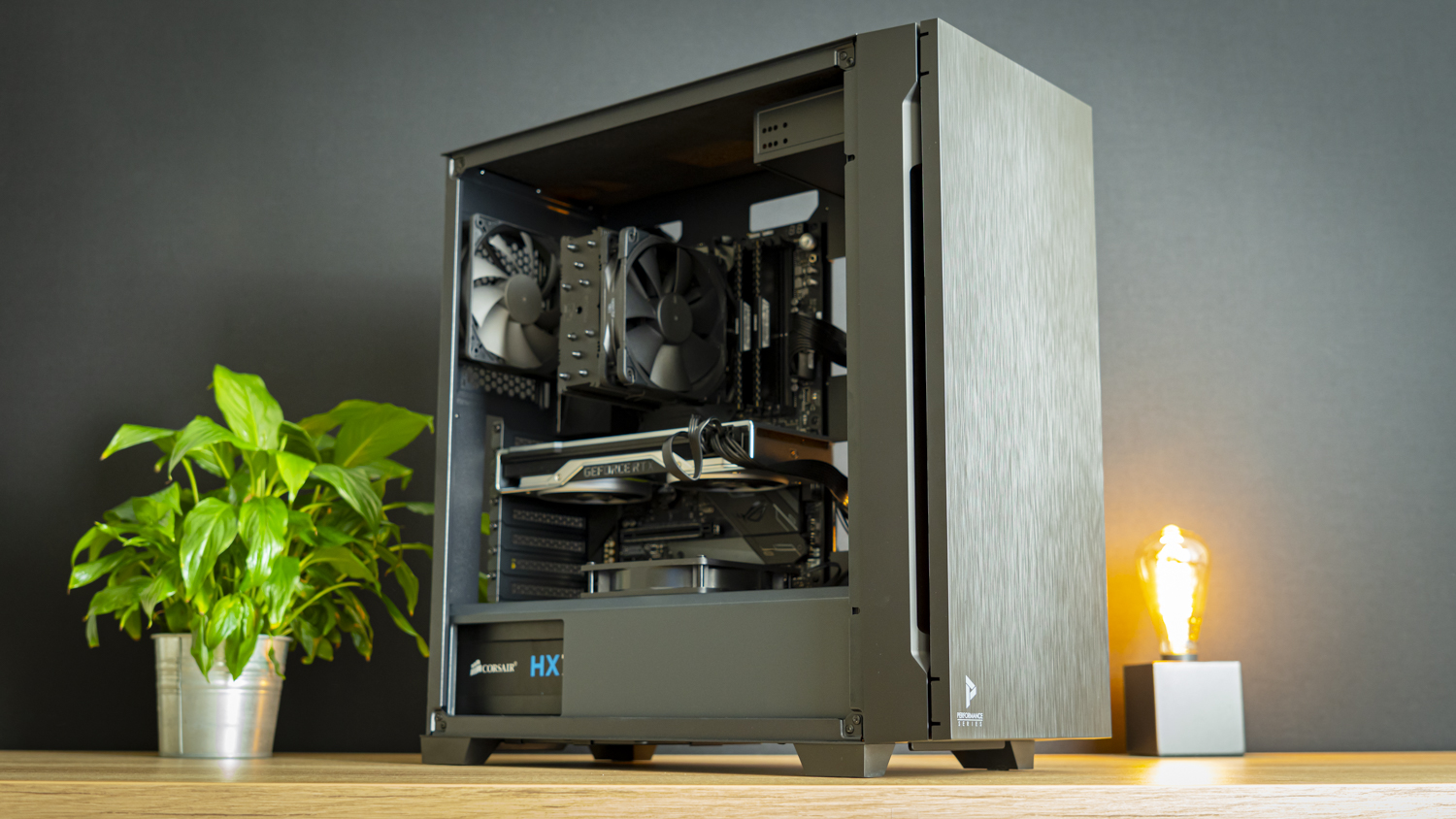Why you can trust Tom's Hardware
We are using the following system for our case test bed:
| CPU | Intel Core i9-9900K |
| Motherboard | Asus Maximus XI Hero WiFi |
| Memory | Corsair Vengeance LPX 3000 MHz, 16 GB (2x 8GB) |
| Graphics | Nvidia GeForce RTX 2070 Super Founder’s Edition |
| CPU Cooling | Noctua NH-U12S Chromax Black |
| Row 5 - Cell 0 | Noctua NT-H2 Thermal Paste |
| Storage | Corsair Force Series MP510 NVMe SSD, 480GB |
| Power Supply | Corsair HX750i |
Installing a system into the Antec P10 Flux is an absolute breeze. The chassis is big and has tons of space for hands and cable management. It won’t result in the prettiest build, but that’s not what this chassis is about anyway, given that it doesn’t have a glass panel.

The motherboard drops right into place, and though I installed the reverse-flow fan earlier, I removed it again so that I could get to the motherboard fastening screws and cable headers.

I then installed the GPU without any difficulties

And our large Corsair HX750i power supply installed swiftly too, conveniently with all the cables pre-attached.

Then, I took care of cable management, which went swiftly and easily thanks to plenty of space and included Velcro straps. Antec includes a few extra straps for more complicated builds, and you can also spot plenty of tie-down points across the back panel.

Lastly, I secured re-secured the reverse-flow fan by using a bendy iFixit screwdriver, though you can also just remove the GPU for easy access. With that, the build was complete and ready for thermal and acoustic testing.
Get Tom's Hardware's best news and in-depth reviews, straight to your inbox.
Current page: Hardware Installation
Prev Page Features and Specifications Next Page Testing & ConclusionNiels Broekhuijsen is a Contributing Writer for Tom's Hardware US. He reviews cases, water cooling and pc builds.
-
BillyBuerger I remember when the P180 (and the SPCR edition) first came out. It was a huge case though so I was happy when the mini P180 was released. I picked up two of those and only just now replaced the one I was using with my new PC build. Decided to go ATX instead of microATX so the mini P180 wouldn't work. Instead going with a Sun Ultra 45 Workstation case for a "sleeper" build. Anyways, I for one really like the fact that they removed the top vent on these ones. That was one of my biggest issues with the original. I understand that's a big open area that you can stick MOAR FANS on. But it kind of defeats the purpose of a quiet build. Especially for a floor type PC where the top can be pointing right at you and makes for an easy target for crap to fall into. I always blocked these up myself. Antec never had great fans so no surprise that these aren't good either. My biggest issue with this version is the big open side panel on the back side. Its very possible that depending on your setup, that it might be against a wall or desk and be blocked anyways. But still, like the top vent on the old ones, it somewhat defeats the purpose of all then dampening to then have a big undampened opening.Reply -
gman68 I guess you could call it a throwback case. Like they haven't paid any attention at all to how case design has changed other than getting rid of the hdd stack. My previous build was an ubber sound proofed case from fractal designs with all the noise dampening, no windows, etc. like this case but with the attention to detail that makes FD one of the favored case makers. And it was quiet, until the graphics card fans kicked in hard. Air flow was good but not great by today's standards, and that's got to be a similar issue with this Antec. My current build is another FD case but with a mesh front, mesh top, large case fans and a top end noctua cpu cooler. (NH-D15 black). This system is quieter than the 'silent' one I built previously. There is just no need for all of that sound proofing anymore. The review is well written though.Reply -
Sleepy_Hollowed That's a great case but a deal breaker for me without a top water cooling option.Reply
But regardless of that, it makes for an excellent air-cooled case. -
Co BIY Picture of the "old Antec" cases would have been nice for those without the background.Reply
I think it looks very nice for a case that is other than black. -
peachpuff Reply
Still rocking its bigger brother the p190 with dual psus.BillyBuerger said:I remember when the P180 (and the SPCR edition) first came out. -
namtrooper81 Reply
I still use the original p180 as a home fileserver case. Stuck in a network cabinet in my garage sporting loads of ol mechanicals for mass storage and a single ssd for when I need to transfer client data faster. Now I am being bottlenecked by my gigabit network. Time to try and source 2.5gbp or 5 gbp network equipment and nics.BillyBuerger said:I remember when the P180 (and the SPCR edition) first came out. It was a huge case though so I was happy when the mini P180 was released. I picked up two of those and only just now replaced the one I was using with my new PC build. Decided to go ATX instead of microATX so the mini P180 wouldn't work. Instead going with a Sun Ultra 45 Workstation case for a "sleeper" build. Anyways, I for one really like the fact that they removed the top vent on these ones. That was one of my biggest issues with the original. I understand that's a big open area that you can stick MOAR FANS on. But it kind of defeats the purpose of a quiet build. Especially for a floor type PC where the top can be pointing right at you and makes for an easy target for crap to fall into. I always blocked these up myself. Antec never had great fans so no surprise that these aren't good either. My biggest issue with this version is the big open side panel on the back side. Its very possible that depending on your setup, that it might be against a wall or desk and be blocked anyways. But still, like the top vent on the old ones, it somewhat defeats the purpose of all then dampening to then have a big undampened opening. -
Jughead79 I really like this case and seriously considering it for my next build. Seems like the only thing holding it back from being perfect is better fan control. Any thoughts or advice on how to get the 5 case fans connected to a motherboard for voltage control? Or some other fan control solution?Reply
